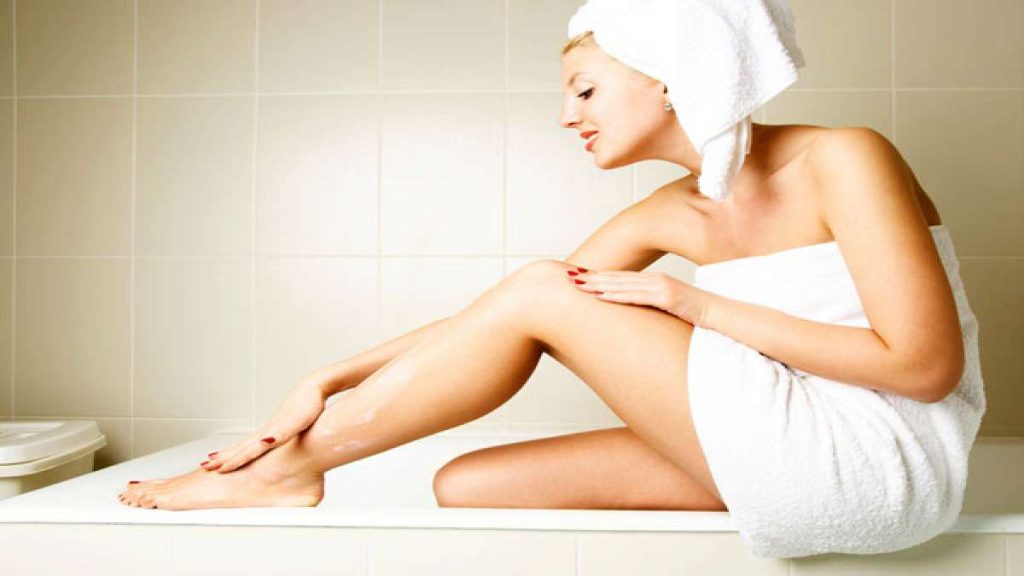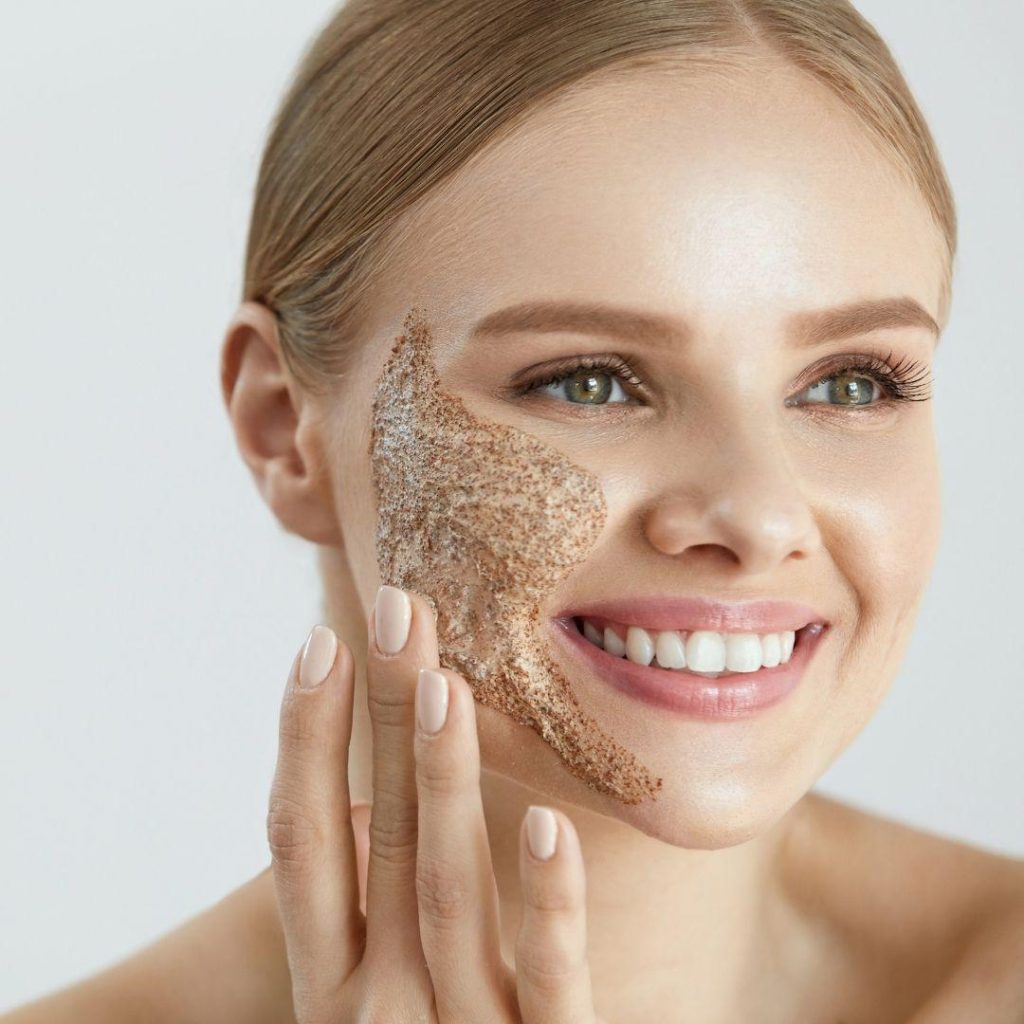Exfoliation is an essential step in any skincare routine. It involves the removal of dead skin cells from the skin’s surface, revealing a brighter, smoother complexion. In this blog post, we will discuss the benefits of exfoliation, the different types of exfoliation, and best practices for incorporating exfoliation into your skincare routine.
Benefits of Exfoliation for the Skin
Exfoliation has several benefits for the skin. Here are some of the key benefits of adding exfoliation to your skincare routine:
Removal of Dead Skin Cells

Dead skin cells can accumulate on the skin’s surface, leading to a dull, rough complexion. Exfoliation helps remove these dead skin cells, revealing smoother, brighter skin underneath. Regular exfoliation can also help prevent clogged pores, which can lead to breakouts.
Increased Cell Turnover
Regular exfoliation promotes cell turnover, which is the process by which the skin produces new cells. As we age, cell turnover slows down, leading to a dull, aging complexion. Exfoliation helps increase cell turnover, which can lead to brighter, more youthful-looking skin.
Smoother, Softer Skin
Skin exfoliation helps improve skin texture, leaving the skin feeling softer and smoother. By removing dead skin cells and promoting cell turnover, exfoliation helps create a more even skin surface.
Improved Skin Tone
It can improve skin tone by removing dull, discolored skin cells and revealing brighter, more even skin underneath. Regular exfoliation can also help reduce the appearance of dark spots and hyperpigmentation.
Enhanced Product Absorption
Exfoliating your skin helps remove the buildup of dead skin cells and other debris on the skin’s surface, which can prevent skincare products from penetrating deeply into the skin. By removing this buildup, exfoliation helps enhance product absorption, allowing your skincare products to work more effectively.
Types of Exfoliation
There are two main types of exfoliation: physical exfoliation and chemical exfoliation.
Physical exfoliation
Physical exfoliation involves the use of a scrub or other physical exfoliant to manually remove dead skin cells from the skin’s surface. Examples of physical exfoliants include sugar scrubs, salt scrubs, and facial brushes.
Pros of Physical Exfoliation
- Provides immediate results
- Can be done at home with minimal equipment
- Can be customized to suit different skin types
Cons of Physical Exfoliation

- Can be too abrasive for sensitive skin
- May cause micro-tears in the skin if not done properly
- Can be time-consuming
Chemical Exfoliation
Chemical exfoliation involves the use of chemical exfoliants, such as alpha-hydroxy acids (AHAs) or beta-hydroxy acids (BHAs), to dissolve dead skin cells and other debris on the skin’s surface. Examples of chemical exfoliants include glycolic acid, salicylic acid, and lactic acid.
Pros of Chemical Exfoliation
- Can be less abrasive than physical exfoliation
- Can be customized to suit different skin types
- Can help address specific skin concerns, such as acne or hyperpigmentation
Cons of Chemical Exfoliation
- May cause irritation or sensitivity
- Can be more expensive than physical exfoliants
- May require a longer adjustment period
Choosing the Right Type of Exfoliation
When choosing an exfoliation method, it’s essential to consider your skin type and concerns. If you have sensitive skin, you may want to opt for a gentler exfoliation method, such as a chemical exfoliant. If you have oily or acne-prone skin, a BHA may be more effective at unclogging pores. Consult with a skincare professional to determine the best exfoliation method for your skin.
Skin Exfoliation Tips

Here are some tips for incorporating exfoliation into your skincare routine:
Frequency of Exfoliation
It’s important to find the right balance when it comes to exfoliation frequency. Over-exfoliating can lead to irritation and sensitivity, while under-exfoliating can result in a buildup of dead skin cells. As a general rule, aim to exfoliate 1-2 times per week. However, you may need to adjust your exfoliation frequency based on your skin type and concerns.
Proper Technique for Exfoliation
When exfoliating, it’s essential to use gentle, circular motions to avoid damaging the skin. Avoid scrubbing too hard, as this can cause micro-tears in the skin. It’s also important to avoid using exfoliants on areas of the skin that are already irritated or inflamed.
Post-Exfoliation Care
After exfoliating, it’s important to hydrate and protect the skin. Apply a hydrating serum or moisturizer to help soothe and replenish the skin. It’s also essential to use sunscreen, as exfoliation can make the skin more sensitive to the sun’s rays.
Skincare Tips
In addition to exfoliation, there are several other steps you can take to maintain healthy, radiant skin. Here are some essential skincare tips:
- Cleanse your skin twice a day to remove dirt, oil, and makeup.
- Use a toner to help rebalance the skin’s pH levels and prepare the skin for other skincare products.
- Apply a hydrating serum to help plump and hydrate the skin.
- Use a moisturizer to help lock in moisture and protect the skin from environmental damage.
- Apply sunscreen every day to protect your skin from the sun’s harmful rays.
By removing dead skin cells and promoting cell turnover, exfoliation can help improve skin texture, tone, and overall radiance. When choosing an exfoliation method, it’s important to consider your skin type and concerns. By following proper exfoliation techniques and incorporating other essential skincare steps, you can achieve healthy, glowing skin.